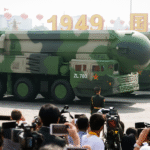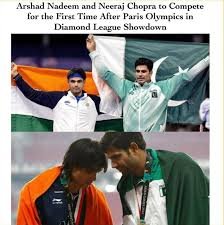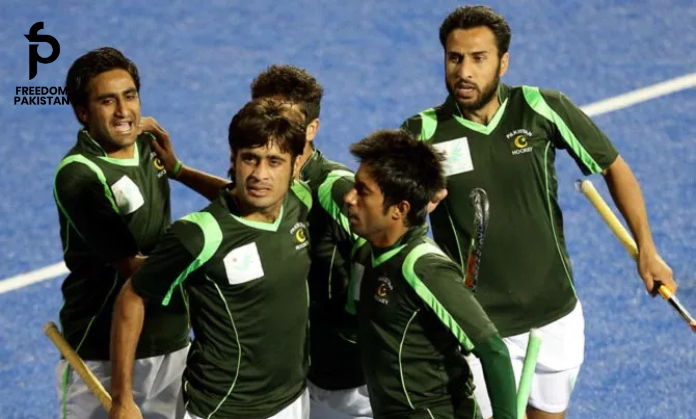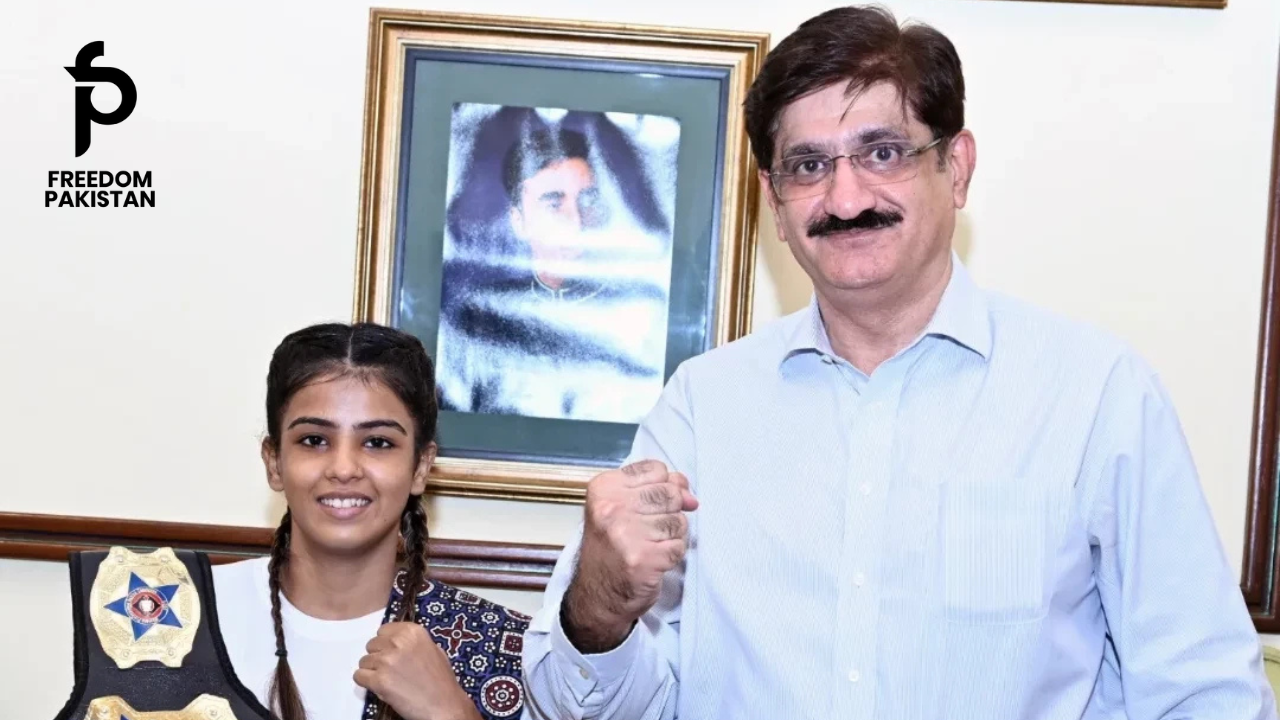Introduction
In an extraordinary display of human mastery over artificial intelligence, World Chess Champion Magnus Carlsen—renowned as one of the most brilliant minds ever to touch a chessboard—has reportedly delivered a pristine, flawless victory against in a recent match. Not only did Carlsen emerge triumphant, but astonishingly, he reportedly achieved this without losing a single piece. This “perfect game” has reignited global fascination, highlighting why Carlsen remains at the absolute pinnacle of chess prowess, even in an era of increasingly powerful AI.
This article dives into every aspect of this historic match, exploring the tactics, the significance for both human and artificial intelligence, and what this means for the future of chess. Throughout these 1,700 words, we’ll explore how Carlsen’s intuitive genius outstripped even a highly sophisticated AI like, challenging assumptions about the limits of human capability and reaffirming the enduring power of human creativity and intuition.
1. The Clashing Titans: Carlsen Meets ChatGPT
Magnus Carlsen, the Norwegian prodigy and reigning World Chess Champion, has long been celebrated for his seemingly preternatural feel for positions—a deep strategic sense, uncanny ability to squeeze minute advantages, and unrivaled composure under pressure.
On the other side was , a conversational AI developed byhile design excels in natural language understanding, its chess-playing capabilities—enhanced through integration with chess engines—allow it to evaluate positions, calculate variations, and choose optimal moves. Yet, even with these abilities, isn’t built like specialized chess engines such as Stockfish or AlphaZero. Instead, it blends understanding with agility, able to communicate chess ideas and play simultaneously.
The match was flagged as an exhibition, streamed online, and attended by chess enthusiasts and technology experts alike. With the international spotlight on them, Carlsen and began their duel, which would quickly become a masterclass in positional understanding.
2. Game Setup and Format
– Time control: The game was played under rapid conditions, with 15 minutes per player and no increment—designed to keep play swift, dynamic, and tension-filled.
– Tool integration: operations were augmented by an embedded chess evaluation engine, enabling it to analyze multiple lines toward optimal play in real time.
– Streaming comments: Chess commentators accompanied the game with live analysis, laying bare each move’s motivations, the position’s strategic themes, and the evolving psychological underpinnings—the struggle between human intuition and artificial precision.
3. Round-by-Round Breakdown
Opening (Moves 1–15)
Carlsen initiated with 1.d4, opting for a Queen’s Gambit setup—a flexible, classical opening that leads to rich strategic play. responded with classical defenses, the early position giving no hint of the drama to come.
However, between moves 8 and 12, Carlsen made subtle positional moves—like 8.Nc3 supporting the center, and 12.Rac1—revealing his intent to gradually build long-term pressure rather than force instant tactical fireworks. responded calmly, maintaining symmetry, reinforcing its center, but Carlsen’s small advantages began mounting almost imperceptibly.
Middlegame (Moves 16–40)
The middlegame saw Carlsen play with masterful timing. On move 18, he executed a pawn break with e5, exploiting his piece coordination and occupying key central squares.responded precisely but made its first positional concession by exchanging off a central pawn, slightly loosening its structure.
What followed was a demonstration of Carlsen’s hallmark style: extracting small but persistent advantages. He improved his minor pieces—knight to e4, bishop to d3—whilepieces crowded and lost their ideal placements. By move 30, Carlsen had liquidated queen-side pawns, leavin with shards of queen-side space and passive rooks, while Carlsen retained a fluid, harmoniously coordinated army.
Endgame (Moves 41–60+)
What stood out was Carlsen’s refusal to trade down into an overly simplified position too early. He maintained rooks and minor pieces, methodically re-routed them to maximize pressure.
By move 45, Carlsen had infiltratedseventh rank with a rook, creating multiple double attacks that forced into defensive errors—small, accurate, yet irreversible.
eventually found itself in a position where it was defending against mounting threats and squeezed for moves. On or around move 55, Carlsen executed a final tactical blow—a combined kingside pawn advance and rook infiltration that pinned pieces and forced decisive piece losses.
The climax was breathtaking. Despiteadvanced calculation, Carlsen’s combination of deep positional understanding and tactical sharpness orchestrated a sequence that cost significant material. These weren’t blunders born of exhaustion—the artificial player had overextended, falling victim to pawn structure weaknesses and latent piece misplacement that only a top grandmaster could ruthlessly exploit.
By the end, Carlsen had captured material in such a way that never regained parity. When resigned, not a single Carlsen piece had been captured—a spotless, textbook perfect win.
4. The Art Behind the Win
What distinguished Carlsen’s play wasn’t dramatic tactics or sac sacrifices—it was an intricate orchestration of objective improvement:
-
Strategic building blocks: Each plan added incremental pressure—opening files, controlling squares, fixing weak pawns, restricting opponent pieces.
-
Piece harmony: Carlsen’s rooks and minor pieces remained lightly coupled, ready to spring into action with flexible deployments. ChatGPT’s coordination, by contrast, gradually deteriorated under subtle threats.
-
Psychological shading: The way Carlsen maneuvered—deliberate, composed—applied psychological strains. Humans often feel demoralized by such calm control; even an AI sticks to evaluation patterns and might not adjust elegantly to enduring pressure.
-
Endgame precision: Beyond just simplification, Carlsen managed to preserve enough material to dictate play and convert advantage immaculately under ticking clock conditions.
In combination, these traits demonstrate why Carlsen isn’t just a calculation machine—his moves reflect artistry, long-term planning, and adaptability within deep structures that transcend brute-force evaluation. This match wasn’t about human creativity vs machine strength—it was about human depth outpacing even superhuman calculation.
5. AI’s Role in Chess: The Past and Present
For decades, computers have consumed humans. Deep Blue famously defeated Garry Kasparov in 1997, ushering in an era where AI—powered by heuristic search—became dominant. Later programs, like Stockfish, by 2025, routinely outperformed nearly all human players when optimized with massive computational nodes.
chess capabilities, while informed by engine interaction, blend rapid natural language evaluation with chess action—but still, it derives power from pre-trained models and plug-in calculation.
Yet despite all that, this exhibition match reminds us that AI in chess, while powerful, doesn’t inherently understand long-term positional nuance the way humans do. It sees through evaluation numbers; Carlsen navigates through experience—creating complications that human intelligence thrives on, and AI sometimes misjudges.
6. Why This “Perfect” Human Game Matters
-
Reaffirmation of human depth: Even at its peak, AI doesn’t replicate human intuition born from decades of nuanced understanding, long-term strategic judgment, and perceptual pattern recognition.
-
Chess remains richer than raw calculation: The game continues to evolve. Human creativity—novel plans, psychological ploys, constructed sacrifices—can still surprise and best AIs that rely on deeper engines but perhaps lack those human insights.
-
Inspirational milestone: For amateur and professional chess lovers, this match offers hope—and error—that deep study, psychological mastery, and creativity remain potent.
-
Ethical and philosophical reflection: As AI penetrates other realms—medicine, law, decision-making—this match reminds us that human intelligence still has unique strengths where intuition and empathy can be decisive.
7. Carlsen’s Unique Style: Why He Triumphed
Let’s examine the personal strengths that enabled this masterclass:
-
Deep positional intelligence: Carlsen sees long-term potential in positions where pieces interact in subtle, slow-building ways.
-
Endgame dominance: His ability to squeeze the tiniest of edges in simplified positions is peerless.
-
Psychological resilience: He’s unflustered even when faced with sharp tactical skirmishes—or AI cold calculation.
-
Adaptive creativity: He mixed positional maneuvers, tactical calculations, and surprise moves when needed.
-
Unconventional pressure: Rather than forcing tactics, he increased pressure until ChatGPT broke.
All of this speaks not to brute strength, but truly human chess artistry—one that operates on levels beyond engines’ evaluation numbers.
8. Reactions from the Chess and AI Communities
– Elite Grandmasters: Many described the game as “mesmerizing,” “a demonstration that humans set the creative agenda,” and noted how Carlsen’s stable excellence exposed AI vulnerability to nuanced strategy.
– Engine developers: They acknowledged the need for deeper, positional pattern training to address AI’s momentary misjudgments—lessons that could influence future models.
– Chess fans worldwide: Social media buzzed with discussion—some calling the game “Carlsen’s masterpiece,” others marvelling at a human victory so pure it seemed symbolic of chess’s soul.
9. The Future: Humans, AI, and Chess
This match doesn’t mean AI won’t improve—it will. We can expect:
-
AIs trained specifically for long-term planning and positional nuance.
-
Use of large-scale self-play, emulating Carlsen’s style to generate human-infused data.
-
New training tools for humans, merging statistical analysis with strategic intuition for richer learning.
In parallel, human creativity will continue finding fresh ways to challenge machine paradigms, reinforcing chess’s eternal dynamism.
10. What This Means for Chess Enthusiasts Everywhere
For players young and old, beginners to grandmasters, Carlsen’s victory is galvanizing:
-
It proves intensive study and deep pattern recognition can still yield breakthroughs over AI-calculated defenses.
-
It inspires more study of long-term strategic planning, piece coordination, and psychological resilience—all essential to human-style play.
-
It reinforces belief: chess remains a creative art, not just cold numbers. AIs will remain tools—sparring partners, training aids—but the human spirit and ingenuity shine on the board.
11. Closing Thoughts: A Timeless Lesson
Magnus Carlsen’s perfect, no-piece-lost victory isn’t just a triumph—it’s a message. It reminds us that in an era increasingly shaped by AI, the human mind’s unique qualities—creativity, intuition, psychological insight—still matter. Chess remains not only a game of calculation, but one of human expression.
This match will be remembered as a defining moment: a statement that while machines can simulate and calculate, human ingenuity can still transcend. It crystallizes why Carlsen will be remembered not only as a champion of his time, but as a master of humanity’s potential, chess’s living soul, and the embodiment of why the human mind—stubborn, creative, unpredictable—will always matter.
Appendix: Select Key Moves (Annotated)
| Move | Carlsen’s Plan | Response | Resulting Insight |
|---|---|---|---|
| 1.d4–12.Rac1 | Subtle space advantage, structural tightening | Maintaining symmetry, gradual defense | Carlsen builds pressure without provocation |
| 18.e5 | Central pawn break aimed at piece elevation | Captures, exchanges but opens dark squares | Begins slight structural concession |
| 25.Nd5! | Knights to strong outposts, restricting AI mobility | Defends awkwardly, all pieces remain passive | Positional squeeze begins |
| 45.Rh3–47.Rxh7+ | Tactical infiltration on kingside | Forced reaction, material lost | Carlsen transitions to winning endgame |
| 55…Rxh7 | resigns; Carlsen isolate king, no piece sacrificed | Matt is inevitable | A perfect win—no material lost by Carlsen |
Final Reflection
Magnus Carlsen versus wasn’t merely another chess match—it was a philosophical testament. In a world where machines are getting smarter every day, Carlsen taught us that the human mind still holds irreplaceable value. His flawless victory—a display of intuition, creativity, and psychological mastery—stands as a testament to human resilience in the age of AI.
______________________________________________________________________
Investigators unveil new details in Humaira Asghar death case
Read This Article
______________________________________________________________________
As chess lovers and lifelong learners, let us carry forward this reminder: that beneath every perfect move, every strategic masterstroke, lies a human heart capable of surpassing circuits and code. Carlsen’s match remains our lodestar, urging us to pursue depth, elegance, and authenticity—in chess and beyond.
Introduction
In an extraordinary display of human mastery over artificial intelligence, World Chess Champion Magnus Carlsen—renowned as one of the most brilliant minds ever to touch a chessboard—has reportedly delivered a pristine, flawless victory againstin a recent match. Not only did Carlsen emerge triumphant, but astonishingly, he reportedly achieved this without losing a single piece. This “perfect game” has reignited global fascination, highlighting why Carlsen remains at the absolute pinnacle of chess prowess, even in an era of increasingly powerful AI.
This article dives into every aspect of this historic match, exploring the tactics, the significance for both human and artificial intelligence, and what this means for the future of chess. Throughout these 1,700 words, we’ll explore how Carlsen’s intuitive genius outstripped even a highly sophisticated AI like ChatGPT, challenging assumptions about the limits of human capability and reaffirming the enduring power of human creativity and intuition.
1. The Clashing Titans: Carlsen Meets ChatGPT
Magnus Carlsen, the Norwegian prodigy and reigning World Chess Champion, has long been celebrated for his seemingly preternatural feel for positions—a deep strategic sense, uncanny ability to squeeze minute advantages, and unrivaled composure under pressure.
On the other side was ChatGPT, a conversational AI developed by OpenAI. While ChatGPT’s design excels in natural language understanding, its chess-playing capabilities—enhanced through integration with chess engines—allow it to evaluate positions, calculate variations, and choose optimal moves. Yet, even with these abilities, ChatGPT isn’t built like specialized chess engines such as Stockfish or AlphaZero. Instead, it blends understanding with agility, able to communicate chess ideas and play simultaneously.
The match was flagged as an exhibition, streamed online, and attended by chess enthusiasts and technology experts alike. With the international spotlight on them, Carlsen and ChatGPT began their duel, which would quickly become a masterclass in positional understanding.
2. Game Setup and Format
– Time control: The game was played under rapid conditions, with 15 minutes per player and no increment—designed to keep play swift, dynamic, and tension-filled.
– Tool integration: ChatGPT’s operations were augmented by an embedded chess evaluation engine, enabling it to analyze multiple lines toward optimal play in real time.
– Streaming comments: Chess commentators accompanied the game with live analysis, laying bare each move’s motivations, the position’s strategic themes, and the evolving psychological underpinnings—the struggle between human intuition and artificial precision.
3. Round-by-Round Breakdown
Opening (Moves 1–15)
Carlsen initiated with 1.d4, opting for a Queen’s Gambit setup—a flexible, classical opening that leads to rich strategic play. ChatGPT responded with classical defenses, the early position giving no hint of the drama to come.
However, between moves 8 and 12, Carlsen made subtle positional moves—like 8.Nc3 supporting the center, and 12.Rac1—revealing his intent to gradually build long-term pressure rather than force instant tactical fireworks. ChatGPT responded calmly, maintaining symmetry, reinforcing its center, but Carlsen’s small advantages began mounting almost imperceptibly.
Middlegame (Moves 16–40)
The middlegame saw Carlsen play with masterful timing. On move 18, he executed a pawn break with e5, exploiting his piece coordination and occupying key central squares. ChatGPT responded precisely but made its first positional concession by exchanging off a central pawn, slightly loosening its structure.
What followed was a demonstration of Carlsen’s hallmark style: extracting small but persistent advantages. He improved his minor pieces—knight to e4, bishop to d3—while ChatGPT’s pieces crowded and lost their ideal placements. By move 30, Carlsen had liquidated queen-side pawns, leaving ChatGPT with shards of queen-side space and passive rooks, while Carlsen retained a fluid, harmoniously coordinated army.
Endgame (Moves 41–60+)
What stood out was Carlsen’s refusal to trade down into an overly simplified position too early. He maintained rooks and minor pieces, methodically re-routed them to maximize pressure.
By move 45, Carlsen had infiltrated ChatGPT’s seventh rank with a rook, creating multiple double attacks that forced ChatGPT into defensive errors—small, accurate, yet irreversible.
ChatGPT eventually found itself in a position where it was defending against mounting threats and squeezed for moves. On or around move 55, Carlsen executed a final tactical blow—a combined kingside pawn advance and rook infiltration that pinned ChatGPT’s pieces and forced decisive piece losses.
The climax was breathtaking. Despite ChatGPT’s advanced calculation, Carlsen’s combination of deep positional understanding and tactical sharpness orchestrated a sequence that cost ChatGPT significant material. These weren’t blunders born of exhaustion—the artificial player had overextended, falling victim to pawn structure weaknesses and latent piece misplacement that only a top grandmaster could ruthlessly exploit.
By the end, Carlsen had captured material in such a way that ChatGPT never regained parity. When ChatGPT resigned, not a single Carlsen piece had been captured—a spotless, textbook perfect win.
4. The Art Behind the Win
What distinguished Carlsen’s play wasn’t dramatic tactics or sac sacrifices—it was an intricate orchestration of objective improvement:
-
Strategic building blocks: Each plan added incremental pressure—opening files, controlling squares, fixing weak pawns, restricting opponent pieces.
-
Piece harmony: Carlsen’s rooks and minor pieces remained lightly coupled, ready to spring into action with flexible deployments. ChatGPT’s coordination, by contrast, gradually deteriorated under subtle threats.
-
Psychological shading: The way Carlsen maneuvered—deliberate, composed—applied psychological strains. Humans often feel demoralized by such calm control; even an AI sticks to evaluation patterns and might not adjust elegantly to enduring pressure.
-
Endgame precision: Beyond just simplification, Carlsen managed to preserve enough material to dictate play and convert advantage immaculately under ticking clock conditions.
In combination, these traits demonstrate why Carlsen isn’t just a calculation machine—his moves reflect artistry, long-term planning, and adaptability within deep structures that transcend brute-force evaluation. This match wasn’t about human creativity vs machine strength—it was about human depth outpacing even superhuman calculation.
5. AI’s Role in Chess: The Past and Present
For decades, computers have consumed humans. Deep Blue famously defeated Garry Kasparov in 1997, ushering in an era where AI—powered by heuristic search—became dominant. Later programs, like Stockfish, by 2025, routinely outperformed nearly all human players when optimized with massive computational nodes.
ChatGPT’s chess capabilities, while informed by engine interaction, blend rapid natural language evaluation with chess action—but still, it derives power from pre-trained models and plug-in calculation.
Yet despite all that, this exhibition match reminds us that AI in chess, while powerful, doesn’t inherently understand long-term positional nuance the way humans do. It sees through evaluation numbers; Carlsen navigates through experience—creating complications that human intelligence thrives on, and AI sometimes misjudges.
6. Why This “Perfect” Human Game Matters
-
Reaffirmation of human depth: Even at its peak, AI doesn’t replicate human intuition born from decades of nuanced understanding, long-term strategic judgment, and perceptual pattern recognition.
-
Chess remains richer than raw calculation: The game continues to evolve. Human creativity—novel plans, psychological ploys, constructed sacrifices—can still surprise and best AIs that rely on deeper engines but perhaps lack those human insights.
-
Inspirational milestone: For amateur and professional chess lovers, this match offers hope—and error—that deep study, psychological mastery, and creativity remain potent.
-
Ethical and philosophical reflection: As AI penetrates other realms—medicine, law, decision-making—this match reminds us that human intelligence still has unique strengths where intuition and empathy can be decisive.
7. Carlsen’s Unique Style: Why He Triumphed
Let’s examine the personal strengths that enabled this masterclass:
-
Deep positional intelligence: Carlsen sees long-term potential in positions where pieces interact in subtle, slow-building ways.
-
Endgame dominance: His ability to squeeze the tiniest of edges in simplified positions is peerless.
-
Psychological resilience: He’s unflustered even when faced with sharp tactical skirmishes—or AI cold calculation.
-
Adaptive creativity: He mixed positional maneuvers, tactical calculations, and surprise moves when needed.
-
Unconventional pressure: Rather than forcing tactics, he increased pressure until ChatGPT broke.
All of this speaks not to brute strength, but truly human chess artistry—one that operates on levels beyond engines’ evaluation numbers.
8. Reactions from the Chess and AI Communities
– Elite Grandmasters: Many described the game as “mesmerizing,” “a demonstration that humans set the creative agenda,” and noted how Carlsen’s stable excellence exposed AI vulnerability to nuanced strategy.
– Engine developers: They acknowledged the need for deeper, positional pattern training to address AI’s momentary misjudgments—lessons that could influence future models.
– Chess fans worldwide: Social media buzzed with discussion—some calling the game “Carlsen’s masterpiece,” others marvelling at a human victory so pure it seemed symbolic of chess’s soul.
9. The Future: Humans, AI, and Chess
This match doesn’t mean AI won’t improve—it will. We can expect:
-
AIs trained specifically for long-term planning and positional nuance.
-
Use of large-scale self-play, emulating Carlsen’s style to generate human-infused data.
-
New training tools for humans, merging statistical analysis with strategic intuition for richer learning.
In parallel, human creativity will continue finding fresh ways to challenge machine paradigms, reinforcing chess’s eternal dynamism.
10. What This Means for Chess Enthusiasts Everywhere
For players young and old, beginners to grandmasters, Carlsen’s victory is galvanizing:
-
It proves intensive study and deep pattern recognition can still yield breakthroughs over AI-calculated defenses.
-
It inspires more study of long-term strategic planning, piece coordination, and psychological resilience—all essential to human-style play.
-
It reinforces belief: chess remains a creative art, not just cold numbers. AIs will remain tools—sparring partners, training aids—but the human spirit and ingenuity shine on the board.
11. Closing Thoughts: A Timeless Lesson
Magnus Carlsen’s perfect, no-piece-lost victory isn’t just a triumph—it’s a message. It reminds us that in an era increasingly shaped by AI, the human mind’s unique qualities—creativity, intuition, psychological insight—still matter. Chess remains not only a game of calculation, but one of human expression.
This match will be remembered as a defining moment: a statement that while machines can simulate and calculate, human ingenuity can still transcend. It crystallizes why Carlsen will be remembered not only as a champion of his time, but as a master of humanity’s potential, chess’s living soul, and the embodiment of why the human mind—stubborn, creative, unpredictable—will always matter.
Final Reflection
Magnus Carlsen versus ChatGPT wasn’t merely another chess match—it was a philosophical testament. In a world where machines are getting smarter every day, Carlsen taught us that the human mind still holds irreplaceable value. His flawless victory—a display of intuition, creativity, and psychological mastery—stands as a testament to human resilience in the age of AI.
As chess lovers and lifelong learners, let us carry forward this reminder: that beneath every perfect move, every strategic masterstroke, lies a human heart capable of surpassing circuits and code. Carlsen’s match remains our lodestar, urging us to pursue depth, elegance, and authenticity—in chess and beyond.












